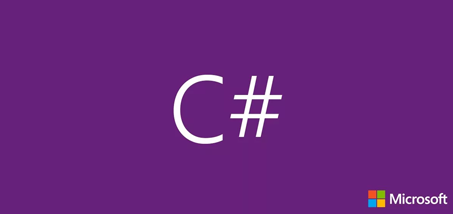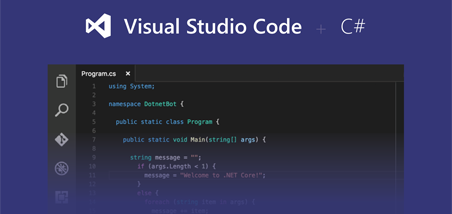C# and Web Application Security
Güvenli Yazılım Geliştirme.Net Web uygulamaları
yazmak sıkı son teslim tarihlerinden kod sürdürülebilirliğine, eski
teknolojilerle uğraşmaktan belgelenmemiş üçüncü taraf bileşenlere kadar çeşitli
nedenlerden dolayı bazı durumlarda çok karmaşık olabilir. Tüm bunların ötesinde,
size şu anda siber saldırganların kodunuzu kırmak için uğraştıklarını
söylesek?
Kodunuzu kırmada başarılı olabilirler mi?
Bu
eğitim, C# kodlarına bakışınızı kökünden değiştirecek.
Siber saldırganların sisteminize saldırabilmelerini sağlayan zayıflıklar ve
bunların yol açtıkları sonuçların yanında daha da önemlisi
kendinizi koruyabilmenizi sağlayan en iyi uygulamalar hakkında bilgi sahibi
olacaksınız. Bu eğitimde .Net çerçevesinin kriptografi veya Kod Erişim Güvenliğinin
kullanımı gibi çeşitli güvenlik yönleri hakkında
bütünsel bir bakış açısının yanında aynı zamanda kaçınmanız gereken çok sık
yapılan C# programlama hataları hakkında da bilgi sahibi olacaksınız. Ayrıca CLR’den modern HTML5 ve AJAX tabanlı ön
uçlara kadar tüm yığında, ASP.NET Web uygulamalarını nasıl etkilediklerine
odaklanan özgün Web güvenlik
açıkları da ele alınıyor. Eğitim, daha eğlenceli ve çekici hale gelmesi için
canlı uygulamalı alıştırmalar eşliğinde gerçekleştirilir.
Bu
eğitimde neler öğreneceksiniz?
• Güvenlik, BT
güvenliği ve güvenli kodlamanın temel kavramları
•
OWASP Top Ten sıralamasının ötesindeki
Web güvenlik boşlukları ve bunlardan nasıl kaçınılacağı
•
XML güvenliği hakkında
bilgiler
• Dağıtım ortamının
nasıl güvenli
bir şekilde kurulacağı ve işletileceği
• İstemci tarafı
güvenlik boşlukları ve güvenli kodlama uygulamaları
•
.Net geliştirme ortamının
çeşitli güvenlik özelliklerini
kullanma
• Kriptografı hakkında
pratik bilgiler
• Tipik kodlama
hataları ve bu hatalardan kaçınma yöntemleri
• Güvenli kodlama
uygulamaları hakkında çeşitli kaynaklar ve diğer bilgiler
Eğitim İçeriği
IT security and secure coding
•
Nature of security
•
What is risk?
•
IT security vs.
secure coding
•
From vulnerabilities
to botnets and cybercrime
•
Nature of security
flaws
•
Reasons of difficulty
•
From an infected
computer to targeted attacks
•
The Seven Pernicious
Kingdoms
•
OWASP Top Ten 2017
Web application security
•
Injection
•
Injection principles
•
SQL injection
•
Exercise – SQL Injection
•
Exercise – SQL injection
•
Typical SQL Injection
attack methods
•
Blind and time-based
SQL injection
•
SQL injection
protection methods
•
Other injection flaws
•
Command injection
•
Command injection
exercise –
starting Netcat
•
Case study – ImageMagick
•
Cookie injection /
HTTP parameter pollution
•
Exercise – Value shadowing
•
Broken authentication
•
Session handling
threats
•
Session fixation
•
Exercise – Session fixation
•
Session handling best
practices
•
Setting cookie
attributes –
best practices
•
Sensitive data
exposure
•
Transport layer
security
•
XML external entity
(XXE)
•
XML Entity
introduction
•
XML bomb
•
Exercise – XML bomb
•
XML external entity
attack (XXE) –
resource inclusion
•
XML external entity
attack –
URL invocation
•
XML external entity
attack –
parameter entities
•
Exercise – XXE attack
•
Preventing
entity-related attacks
•
Case study – XXE in Google Toolbar
•
Broken access control
•
Typical access
control weaknesses
•
Insecure direct
object reference (IDOR)
•
Exercise – Insecure direct object reference
•
Protection against
IDOR
•
Case study – Facebook Notes
•
Failure to restrict
URL access
•
Security
misconfiguration
•
Configuration management
•
Hardening
•
Patch management
•
NET components and
environment overview
•
Insecure file uploads
•
Exercise – Uploading executable files
•
Filtering file
uploads –
validation and configuration
•
Cross-Site Scripting
(XSS)
•
Persistent XSS
•
Reflected XSS
•
DOM-based XSS
•
Exercise – Cross Site Scripting
•
Exploitation: CSS
injection
•
Exploitation:
injecting the tag
•
Exercise – HTML injection with base tag
•
XSS prevention
•
Output encoding API
in C#
•
XSS protection in
ASP.NET –
validateRequest
•
Web Protection
Library (WPL)
Web application security
•
Insecure
deserialization
•
Deserialization
basics
•
Security challenges
of deserialization
•
Deserialization in
.NET
•
From deserialization
to code execution
•
POP payload targeting
MulticastDelegate (C#)
•
Real-world .NET
examples of deserialization vulnerabilities
•
Issues with
deserialization –
JSON
•
Best practices
against deserialization vulnerabilities
•
Using components with
known vulnerabilities
•
Vulnerability
attributes
•
Common Vulnerability
Scoring System –
CVSS
Client-side security
•
JavaScript security
• Same Origin Policy
•
Cross Origin Resource
Sharing (CORS)
•
Exercise – Client-side authentication
•
Client-side authentication
and password management
•
Protecting JavaScript
code
•
Exercise – JavaScript obfuscation
•
Clickjacking
•
Exercise – Do you Like me?
•
Protection against
Clickjacking
•
Anti frame-busting – dismissing protection scripts
•
Protection against
busting frame busting
•
AJAX security
•
XSS in AJAX
•
Script injection
attack in AJAX
•
Exercise – XSS in AJAX
•
XSS protection in Ajax
•
Exercise CSRF in AJAX
– JavaScript hijacking
•
CSRF protection in
AJAX
•
HTML5 security
•
New XSS possibilities
in HTML5
•
HTML5 clickjacking
attack –
text field injection
•
HTML5 clickjacking – content extraction
•
Form tampering
•
Exercise – Form tampering
•
Cross-origin requests
•
HTML proxy with
cross-origin request
•
Exercise – Client side include
.NET security architecture and services
•
.NET architecture
•
Code Access Security
•
Full and partial
trust
•
Evidence classes
•
Permissions
•
Code access
permission classes
•
Deriving permissions
from evidence
•
Defining custom
permissions
•
.NET runtime
permission checking
•
The Stack Walk
•
Effects of Assert()
•
Class and
method-level declarative permission
•
Imperative
(programmatic) permission checking
•
Exercise – sandboxing .NET code
•
Using transparency
attributes
•
Allow partially
trusted callers
•
Exercise – using transparency attributes
Practical cryptography
•
Cryptosystems
•
Elements of a
cryptosystem
•
Symmetric-key
cryptography
•
Providing
confidentiality with symmetric cryptography
•
Symmetric encryption
algorithms
•
Block ciphers – modes of operation
•
Other cryptographic
algorithms
•
Hash or message
digest
Ön Koşullar
C# Programlama tecrübesi






